Best Paid and Free HDR Photography Software
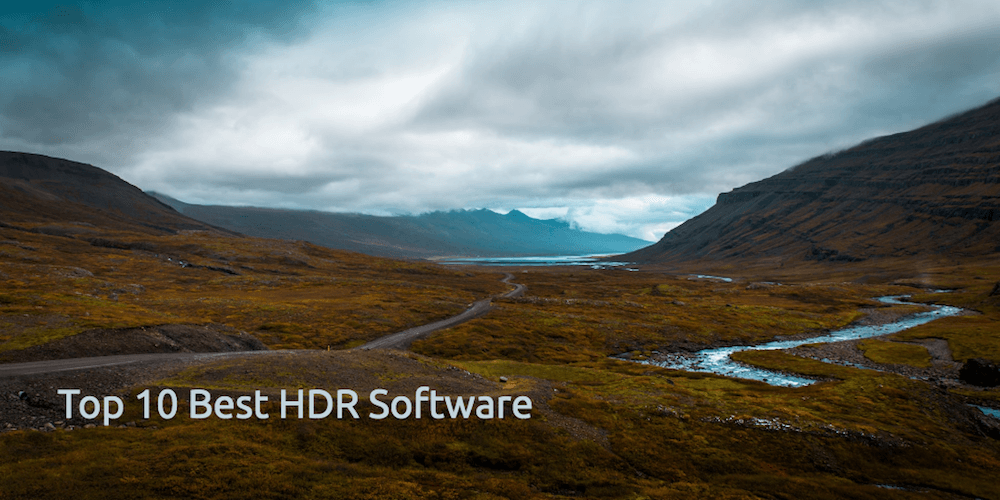
Have you ever taken a photo of the stunning sunset only to be disappointed by the end result? If it helps, you are not entirely to blame. The thing is that it is very difficult to capture photos with a high contrast. These types of shots have a big dynamic range that cameras find hard to capture. Consequently, you fail to keep both the highlights and shadows in a single photo. The good news is that there is a solution – HDR photography. What’s more, there are also tools to help you!
In a nutshell, HDR software solutions combine images taken at different exposures into a single image that boasts more detail. It can also usually be used for tone mapping, ghost removal, aligning images and reducing noise. If it sounds like a tool that you need to invest in, be sure to check out the following top 10 HDR software solutions (listed in no particular order):
1. Luminar
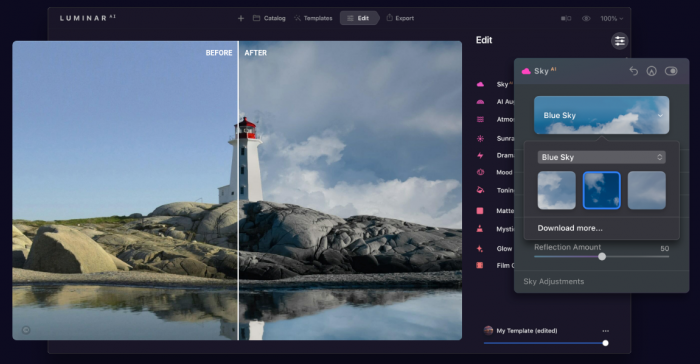
Luminar is a unique tool! It employs artificial intelligence (AI) to make those hard editing jobs a lot easier. Rest assured, if you want more control over your edits, this tool still allows you to take complete control.
It offers a wide range of tools that include: Layers, Portrait, Canvas, Creative, PRO and Essential. One feature that deserves to be highlighted is its AI Sky Replacement feature. It is really amazing and so realistic! In short, you can replace the sky in the click of a button. This means that you no longer need to wait for the right time of the day to take that photo. All in all, with Luminar AI you can expect professional images in a flash. It is a feature-packed tool with several handy features.
✅ Pros
- You can get it for a one-off payment. Included in this fee, you will have access to future updates, support as well as bug fixes.
- Your workspace remains uncluttered.
- If you like to work in Apple Photos, Adobe Photoshop or Lightroom, it is easy to open an image in Luminar. While it can be used as a plug-in for Apple and Adobe, it is actually best to use it in conjunction with these other apps.
- Its AI Sky Replacement feature is really amazing (in short, you can replace the sky in the click of a button).
- The interface is modern, yet functional.
✖️ Cons
- The panels could be organized better.
- There is no option to export an image.
2. Adobe Lightroom Classic

If you are searching for a tool that is easier to use than Photoshop, Adobe Lightroom Classic is a good choice. This multi-functional image editing tool offers an impressive selection of useful features. If you want to use it specifically for HDR photography, you will find that it is quite intuitive and can deliver rather satisfactory results. Its Photo Merger feature is very quick. In just a couple of clicks, you can merge a couple of images so that you can then make your final tweaks.
✅ Pros
- From import to the final image, it only takes four simple steps.
- It is easy to take your HDR image too far which will only result in unrealistic photos.
✖️ Cons
- It is simpler to use than Photoshop, but it still has some learning curve.
- Its dynamic range is not that impressive.
3. Photomatix

Photomatix boasts an intuitive interface which makes HDR, which can be hard, much easier.
With Photomatix, you can use its Quantum HDR engine to merge your photos efficiently for more natural-looking results.
Unlike other programs, it does not have so-called presets. Instead, it offers 8 Looks features that include Architecture and Essential. Though, if you would like to add more edits, you can use the masking and layers features. Moreover, thanks to its sliders and controls, you can remain in control over your photos. All in all, it offers enough effects to create impressive HDR photos quickly and with its use of AI you can add more details and depth to your images.
✅ Pros
- It is simple to use the program and unlock its potential.
- You can use it to change a single raw photo to HDR (unlike traditional HDR photography that combines more than one photo).
- It is simple to undo an edit to revert back to your original image.
- Its batch processing feature is very useful.
- It is suitable for beginners as well as more advanced photographers.
✖️ Cons
- It is not a full-featured image editing tool and does not offer the complete range of features.
4. Machinery HDR

If you are searching for a tool that can help you with HDR tone mapping, be sure to check out Machinery HDR Effects. Though, while the interface is intuitive, be ready as it does require quite some time to become skilful at using this program (and unfortunately its online manual does not make it much easier). The program might not be perfect, but if you are willing to play around a bit, you can successfully deal with less significant issues. All things considered, it is good at rendering tone-mapped HDR photos that look really natural.
✅ Pros
- It is easy to auto-align handheld brackets.
- It boasts an awesome range of built-in presets.
- It is easy to navigate your way around in this tool.
- The built-in vignette control panel is respectable.
✖️ Cons
- It is not as straightforward as similar apps.
- While the built-in sharpening control is a good addition, if your photo has noise it will create many noise artefacts and fixing it can be challenging.
5. Oloneo HDR Photoengine
If speed plays a major factor in your decision-making process, you will love Oloneo Photoengine. Not only is this program super quick, but you can also view your modifications in real time and as soon as you are done making changes, you can save your image directly (no extra time is required for processing). With the help of a single slider, you will be able to get most of the things done. Overall, it boasts a very decent selection of features and tools, (the Natural HDR mode in particular will grab your attention).
✅ Pros
- Unlike the majority of other similar products, this tool does not remove as much sharpness.
- It is very easy to use (without having to rely too much on presets).
- It is easy to install.
✖️ Cons
- The file browser is not built for efficiency.
- At times it can create a halo around a darker area.
6. HDR Expose 3
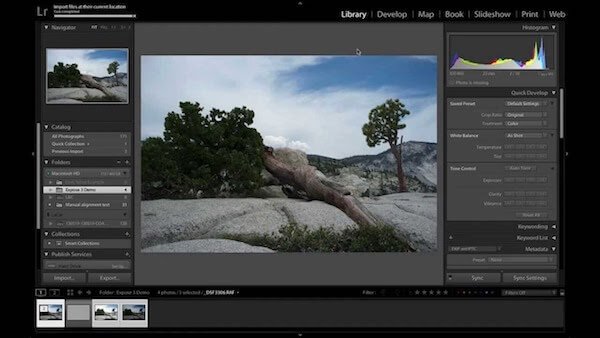
If you are looking to create only natural-looking photos, you can check out HDR Expose. Though, if you are searching for a tool that can whip up more surrealistic results, skip this one and continue reading.
✅ Pros
- It will check for distortion problems automatically.
- It has an option to remove ghosting and align images.
✖️ Cons
- It is not as simply to import photos.
- It can take rather long to install.
7. SNS-HDR
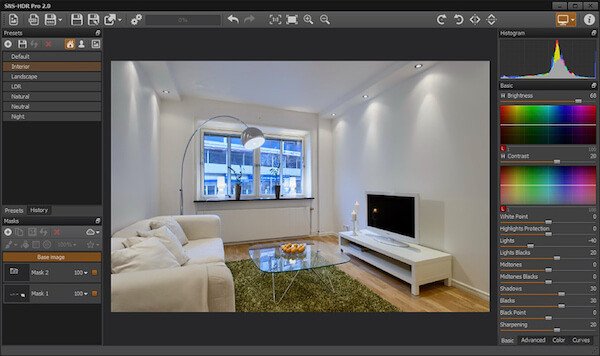
SNS-HDR is one of the top software solutions for creating natural-looking HDR images. It offers 8 presets, but you can also create your own custom presets. Similar to Oloneo HDR Photoengine, this tool is also very quick. It does not take long to refresh which means that you can see your changes in real time. Though, if you are busy with a lot of batch processing, speed can become a problem. All things considered, it is very simple to use and one of the best tools if you need to recover detail.
✅ Pros
- It is great for recovering detail.
- There are no ghosting or halos, making it great tool if realistic images are important to you.
- Revisions to the program are made regularly.
- Its automatic alignment is very good.
- It is easy to install.
✖️ Cons
- It is not ideal if you want to create over-the-top saturation and extreme effects.
- The program does take some time to open.
- You do not have as much control over your RAW images.
- It cannot be used as a plug-in.
- It does not offer native support for Mac.
- The manual is unclear at times.
8. EasyHDR
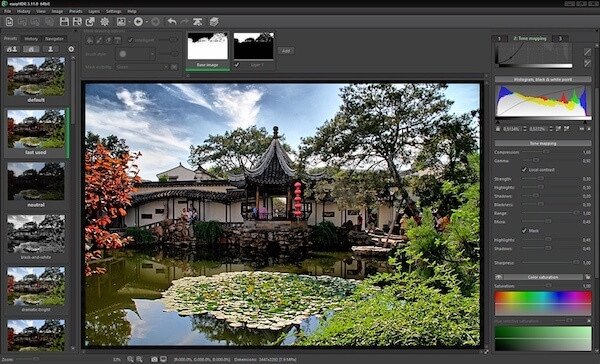
EasyHDR is an affordable stand-alone app. It is a great tool if you are only beginning with HDR photography, but keep in mind that as you become more experienced you will find that you have outgrown this tool’s capabilities.
✅ Pros
- It offers sufficient visual feedback for beginners.
- It renders the final photos really well.
✖️ Cons
- While this app has several features, you will most likely find that it is still simpler to use Adobe Photoshop.
- It does not have that many options.
- If you use JPEG images, you will see quite a degree of noise and artefacts.
- It does not have an undo option.
- It requires more work to get the colors correct.
9. Photomatix Pro
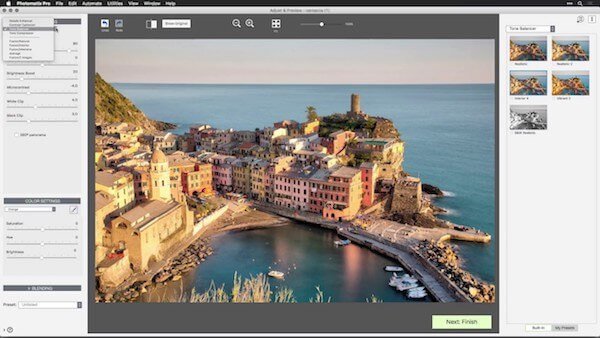
Photomatix Pro is a very good tool for those who want to play around with exposure and create HDR images. Its use of presets, rendering algorithms and basic set of tools to tweak the color makes it a great software solution for beginners as well as more experienced photographers. It has a useful selective brush tool that you can use to modify the tone or color and blend your images. Overall, it does not offer as much functionality as you might have come to expect, but it is still a cost-effective option to get the job done.
✅ Pros
- It boasts a good selection of tools that you can use to adjust and manipulate your images.
- Tips and written tutorials are available should you require more help.
- It offers a nice range of presets as well as custom presets.
- It can be used as a plug-in for Adobe Lightroom.
- It boasts many tone mapping options.
✖️ Cons
- The program does have quite a learning curve.
- It does not offer that many file sharing options if you would like to export edited photos.
- Mac users might find that the final result looks different.
10. HDR Projects 8

This is a simple tool if you would like to start experimenting with HDR photography. All in all, it is a good tool to look at and can deliver respectable natural-looking results.
✅ Pros
- It has a plug-in for Lightroom.
✖️ Cons
- Its presets are not that great.

 Previous Post
Previous Post Next Post
Next Post